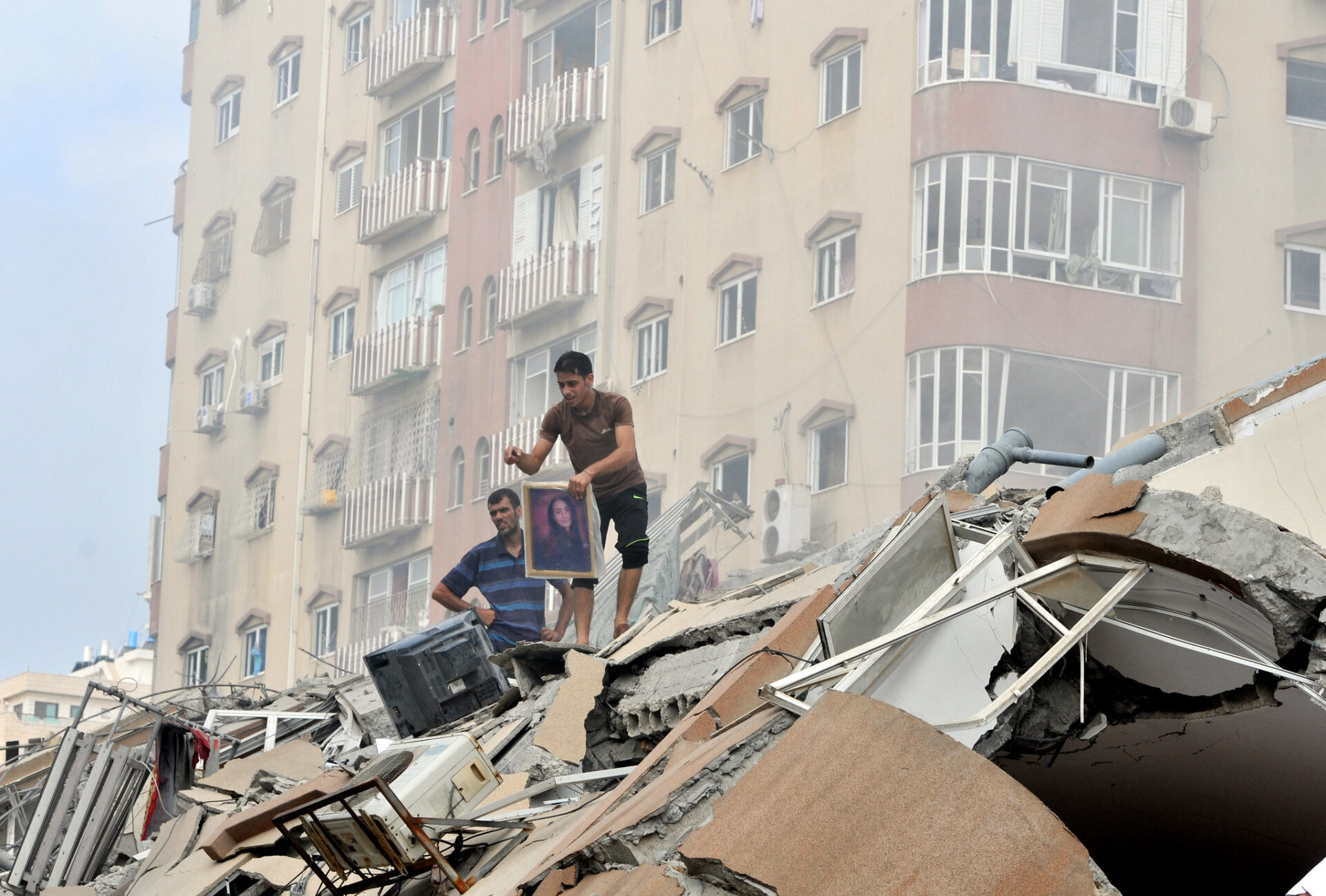In August 1988, Hamas declared its goal was the destruction of Israel. Since then, the organization has claimed responsibility for dozens of attacks that killed hundreds of innocent civilians. Then, on Oct. 7, 2023, Hamas committed its most atrocious act of violence to date, slaughtering 1,300 Israelis.
That’s the history of Hamas you’ve heard on CNN and Fox News. But there is another, forgotten side of Hamas, a history of charity work and overtures of peace and reconciliation.
Before August 1988, Hamas was an Islamic charity, not a militant group. It provided social services, organized youth sports and educational programs, and operated health clinics and orphanages. That’s why Israel funded and supported the organization in the early 1980s. Israeli political leaders at the time believed that strengthening the apolitical, non-violent Islamists would weaken the violent and revolutionary secularists represented by the Palestinian Liberation Organization (PLO), the umbrella group that had dominated Palestinian politics in exile for decades.
But, by the late 1980s, Israel’s occupation of the West Bank and Gaza had become increasingly brutal. From 1967-1987, Israel killed an average of 32 Palestinians every year in the Occupied Palestinian Territories and denied Palestinians freedom of movement, freedom of expression, and basic property rights. In a 1986 poll, 48% of Palestinian families in the Occupied Territories reported having experienced political arrest, 51% had been beaten or physically abused, 56% had been harassed at Israeli military checkpoints, 23% had property or land confiscated, and 18% had a home demolished or sealed.
Then, in late 1987, an Israeli truck driver killed four Gazans, and Palestinians protested in open revolt, known as the First Intifada. For more than four years, Palestinians engaged in primarily non-violent resistance in the form of protests, strikes and boycotts, and infamously, stone-throwing children. In response, Israel brutally suppressed the uprising, killing 142 Palestinians in Gaza in the first year alone without suffering a single casualty.
A closer look at Hamas’s history suggests that it sought a truce with Israel in 1988, 2006, 2008, 2012, and 2017.
Although this grotesque and disproportionate violence enraged the Islamic charity’s leaders, some initially sought a diplomatic solution. On June 1, 1988, two months before Hamas adopted its infamous 1988 charter that called for Israel’s destruction, Hamas leader Mahmoud al-Zahar submitted a peace proposal to Yitzhak Rabin, the then-Israeli Minister of Defense. If Israel wanted peace, it had to withdraw from the Occupied Territories, release Palestinian detainees, restore Palestinian rights, and allow Palestinians to name their own representatives. Hamas’s founder, Sheikh Ahmed Yassin, similarly agreed to negotiate with Israel if it first acknowledged the Palestinian people’s right to self-determination and the right of return to their land.
Needless to say, the Islamic charity’s overtures fell on deaf ears. Israel has long rejected repatriating the hundreds of thousands of Palestinians it expelled from their homes in order to preserve its Jewish demographic majority.
The gruesome violence employed by the Israeli army during the First Intifada radicalized Hamas, which grew increasingly militant thereafter. Hamas fighters killed two Israeli soldiers in 1989, and after Israeli police slaughtered 22 Palestinian civilians in a protest on Oct. 8, 1990, Hamas committed its first attack on Israeli civilians on Dec. 14, 1990. Two Hamas militants from Gaza stabbed three Israeli workmen to death in Jaffa. From that point forward, Hamas killed hundreds of Israeli civilians in dozens of attacks.
Hamas stayed out of politics during the Oslo Process, a series of political agreements between Israel and the PLO that gradually transferred a degree of Palestinian autonomy within the Occupied Palestinian Territories to the newly established Palestinian Authority (PA) and the Palestinian National Council (PNC). During the 1990s, Hamas refused to recognize the legitimacy of negotiations with Israel and thus took no part in Palestinian elections. But, by 2006, Hamas leaders decided they could have a greater impact from within the system than without, and the group participated in the January 2006 PNC elections. To everyone’s surprise, they won.
In March 2006, Hamas leader Ismail Haniyeh put out a peace overture and wrote:
“We in Hamas are for peace and want to put an end to bloodshed. We have been observing a unilateral truce for more than a year without reciprocity from the Israeli side. The message from Hamas and the Palestinian Authority to the world powers is this: talk to us no more about recognising Israel’s ‘right to exist’ or ending resistance until you obtain a commitment from the Israelis to withdraw from our land and recognise our rights.”
He added, “Peaceful means will do if the world is willing to engage in a constructive and fair process in which we and the Israelis are treated as equals.”
In 2008, Hamas leader Khaled Meshal agreed to a 10-year truce with Israel in exchange for a Palestinian state in the pre-1967 Occupied Territories with Jerusalem as its capital, with genuine sovereignty, but without settlements and without recognizing Israel. Israel rejected both proposals outright.
In 2012, Hamas’s military commander Ahmed Jabari had been conducting indirect talks with Israel via Hamas’ deputy foreign minister, Ghazi Hamad, all with the approval of Israel’s then-Defense Minister Ehud Barak. Jabari was expected to sign the peace treaty with Israel. However the dominant view among Israel’s political leadership at the time was that truce talks with Hamas were futile. Israel believed it was preferable to strengthen its “deterrence capacity” by “severely impair[ing] the command and control chain of the Hamas leadership as well as its terrorist infrastructure.” Alas, Israel assassinated Jabari just hours after he received a draft of the deal. Shortly thereafter, it threatened to assassinate every living Hamas political and military leader.
In 2017, Hamas presented a new charter advocating for “a fully sovereign and independent Palestinian state, with Jerusalem as its capital along the lines of 4 June 1967, with the return of the refugees and the displaced to their homes from which they were expelled, to be a formula of national consensus.” Needless to say, these overtures were also rejected outright. “Hamas is attempting to fool the world, but it will not succeed,” a spokesman for Prime Minister Benjamin Netanyahu said at the time.
Israel’s leadership would have the world believe that Hamas has committed itself to unrelenting terror since its founding, a narrative soothing for the grieving Israeli public, but also one at odds with Hamas’s complex evolution. A closer look at Hamas’s history suggests that it sought a truce with Israel in 1988, 2006, 2008, 2012, and 2017. Alas, Israel has preferred war to peace, if peace means a challenge to Jewish demographic domination in Israel or a full withdrawal from the Occupied Palestinian Territories.





















